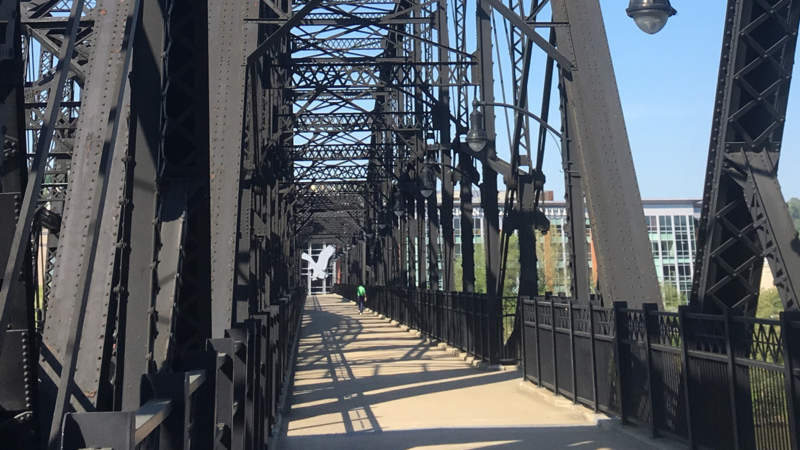An Important Part of Steel History
The double-span 1,174-foot Hot Metal Bridge over the Monongahela River is a Pittsburgh icon, starring in the region’s industrial heyday as carrier of railroad traffic on its upstream side and molten iron for the Jones & Laughlin Steel Company (via ladle transfer cars) on its downstream side. The upstream span was retrofitted for automobile traffic in 2000, and in 2007, the downstream span was converted, along with the addition of switchbacks and ramps, for bicycle and pedestrian use. It carries the Great Allegheny Passage between Pittsburgh’s South Side and the city’s South Oakland neighborhoods. Travelers enjoy expansive views of the city skyline and the coal barges and pleasure boats below. Near the south foot of the bridge is the Steelworker Commemorative Sculpture, erected in honor of the thousands of steelworkers who labored in Pittsburgh’s blast furnaces and mills. The Hot Metal Bridge was inducted into the North America Railway Hall of Fame in 2016.
Bridge History
The Hot Metal Bridge was constructed by the Edgemore Boiler Works in two stages, with the span carrying conventional railroad traffic built in 1887, and the span carrying molten iron in 1900. At its peak, locomotives hauled 4,300 tons of molten iron daily from blast furnaces on the north side of the Monongahela River to Bessemer converters on Pittsburgh’s South Side for producing steel. During World War II, 15 percent of the total steel-making capacity of the United States crossed the Monongahela River via the Hot Metal Bridge.
Visitor Information
Open daily, dawn to dusk. The nearest parking includes metered spots on Pittsburgh’s South Side, or in commercial garages in the SouthSide Works retail district.

